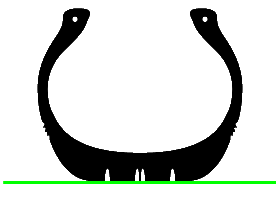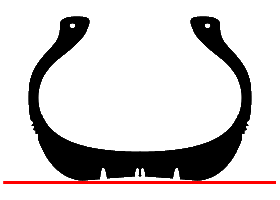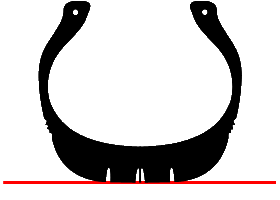Find your tyre pressure
Maintaining the correct tyre pressure will help to extend the life of your tyres, improve vehicle safety and maintain fuel efficiency.
What should my tyre pressures be?
With so many different types of vehicles, and different tyre options, it can be difficult to identify the optimal tyre pressure for you. Luckily, here at Kwik Fit we have created a tool that will identify the recommended tyre pressure for your vehicle.
What happens if tyre pressure is too low?
If the tyre pressure is too low, it can cause problems such as reduced fuel economy, harsher steering, greater tyre wear and even an increased chance of tyre blowouts. To guarantee the best performance and safety, maintain the recommended tyre pressure for your vehicle.
How often should you check tyre pressure UK?
It is recommended that you check your tyre pressure regularly and before long journeys. You can find out more about tyre pressure in our blog.
Search By Vehicle Number Plate
Enter your vehicle number plate below, click 'Search' and we will find the tyre pressure for your vehicle.

If you are using your vehicle to carry an additional load or weight, always consult your vehicle handbook for the correct laden pressure. If the tyre size shown does not match the tyre size on your vehicle, please contact your local Kwik Fit Centre.
Free Tyre Check
If we were unable to find your recommended tyre pressure, or you have concerns about the condition of your tyres or tyre fitting – including loss of pressure, tread wear, or damage – Kwik Fit offers a free tyre inspection at all centres. Book online and our trained technicians will carry out a thorough check of all your tyres and inform you of the recommended pressures for the front and rear.
How to check your tyre pressure
Now that you know what your tyre pressure should be, the question is: how do you check what it currently is? There are a few answers here.
The easiest way is to use an air compressor with a well-calibrated pressure gauge to actually inflate your tyres to the right pressure – this can be either analogue or digital. Just like bicycle tyres – car tyre pressure stems have valves to stop the air escaping when you take the valve cap off – so you’ll need to actually place the compressor hose on the valve stem as though you’re going to pump the tyres.
Once connected, the pressure gauge should give you an immediate reading of the tyre’s current pressure. An analogue gauge will usually have a circular dial – whereas a digital gauge will usually tell you in digits what the current reading is.
Why Correct Tyre Inflation Is Important
Maintaining the correct tyre pressure will help to extend the life of your tyres, improve vehicle safety and maintain fuel efficiency.
Car tyre pressure is measured by calculating the amount of air that has been pumped into the inner lining of your tyre in pounds per square inch (PSI) or BAR pressure.
The manufacturer of your vehicle will specify the suitable pressure for your tyres, and it is your responsibility as the driver to make sure that the pressure is checked and corrected on a regular basis. We recommend doing this every two weeks to ensure optimum tyre pressure.
If your tyres regularly lose pressure to a significant degree, you may have a slow puncture - and should consider tyre replacement.

Correct Inflation

Under inflation

Over Inflation
Under inflated tyres
Tyres can quickly become underinflated if you don't check weekly or before a long journey. Under inflated tyres will have uneven contact with the road and will exhibit excessive wear on the inside and outside edges of the tread if they are left underinflated for some time. Not only does low tyre pressure wear your tyres out more quickly but you may also experience increased rolling resistance with the road - which means reduced fuel efficiency and increased CO2 emissions.
Over inflated tyres
On the other hand, putting too much air in your tyres can be just as damaging and costly. Over inflated tyres will have a smaller contact patch (the part of the tyre that makes contact with the road) which can in turn lead to a loss of traction and poorer braking distances. Overly high tyre pressure will also cause heavy and uneven wear across the central part of the tyre leading to shorter tyre lifespans than if it was correctly inflated.
Correct tyre pressures
It's not always apparent that air is being lost from your tyres, but it generally escapes at the rate of up to two PSI of air every month. More air is usually lost during warm weather, so more regular checks are needed when temperatures rise.
You can find the recommended tyre pressure for your vehicle in your vehicle handbook or printed either in the sill of the driver's door or on the inside of the fuel tank flap. Your vehicle manufacturer may suggest different tyre pressures for your front and rear tyres so make sure you're aware of these guidelines. Alternatively use our tyre pressure finder.
Always check the tyre pressure with a tyre pressure gauge when your tyres are cold. Finally, if you are using your vehicle to carry additional load or weight, always consult your vehicle handbook for the correct loaded tyre pressure.
Does Tyre Pressure differ for Electric Vehicles?
Generally speaking, tyre pressures will likely need to be higher on electric vehicles due to the added weight of the large batteries that are on board. That said, you should always follow the manufacturer’s recommended tyre pressure for the specific make and model of your vehicle which will take into account these factors. Maintaining correct tyre pressure is just as important on electric vehicles and underinflated tyres with increase rolling resistance will have a negative effect on vehicle range. Find out more about tyres for electric and hybrid cars.
Tyre Pressure Measurement Converter
Bar and psi are both units of pressure used by car manufacturers to specify the correct tyre pressure for a particular vehicle. You can convert bar to psi and psi to bar using the chart below:
| BAR | PSI | BAR | PSI | BAR | PSI | BAR | PSI | BAR | PSI |
| 1.30 bar | 17 psi | 1.90 bar | 27 psi | 2.60 bar | 37 psi | 3.25 bar | 47 psi | 3.95 bar | 57 psi |
| 1.35 bar | 18 psi | 1.95 bar | 28 psi | 2.65 bar | 38 psi | 3.30 bar | 48 psi | 4.00 bar | 58 psi |
| 1.40 bar | 19 psi | 2.00 bar | 29 psi | 2.70 bar | 39 psi | 3.40 bar | 49 psi | 4.10 bar | 59 psi |
| 1.45 bar | 20 psi | 2.10 bar | 30 psi | 2.75 bar | 40 psi | 3.50 bar | 50 psi | 4.15 bar | 60 psi |
| 1.50 bar | 21 psi | 2.15 bar | 31 psi | 2.80 bar | 41 psi | 3.55 bar | 51 psi | 4.50 bar | 65 psi |
| 1.55 bar | 22 psi | 2.20 bar | 32 psi | 2.90 bar | 42 psi | 3.60 bar | 52 psi | 4.80 bar | 70 psi |
| 1.60 bar | 23 psi | 2.25 bar | 33 psi | 3.00 bar | 43 psi | 3.70 bar | 53 psi | 5.20 bar | 75 psi |
| 1.70 bar | 24 psi | 2.30 bar | 34 psi | 3.05 bar | 44 psi | 3.75 bar | 54 psi | 5.50 bar | 80 psi |
| 1.75 bar | 25 psi | 2.40 bar | 35 psi | 3.10 bar | 45 psi | 3.80 bar | 55 psi | 5.85 bar | 85 psi |
| 1.80 bar | 26 psi | 2.50 bar | 36 psi | 3.20 bar | 46 psi | 3.90 bar | 56 psi | 6.20 bar | 90 psi |




